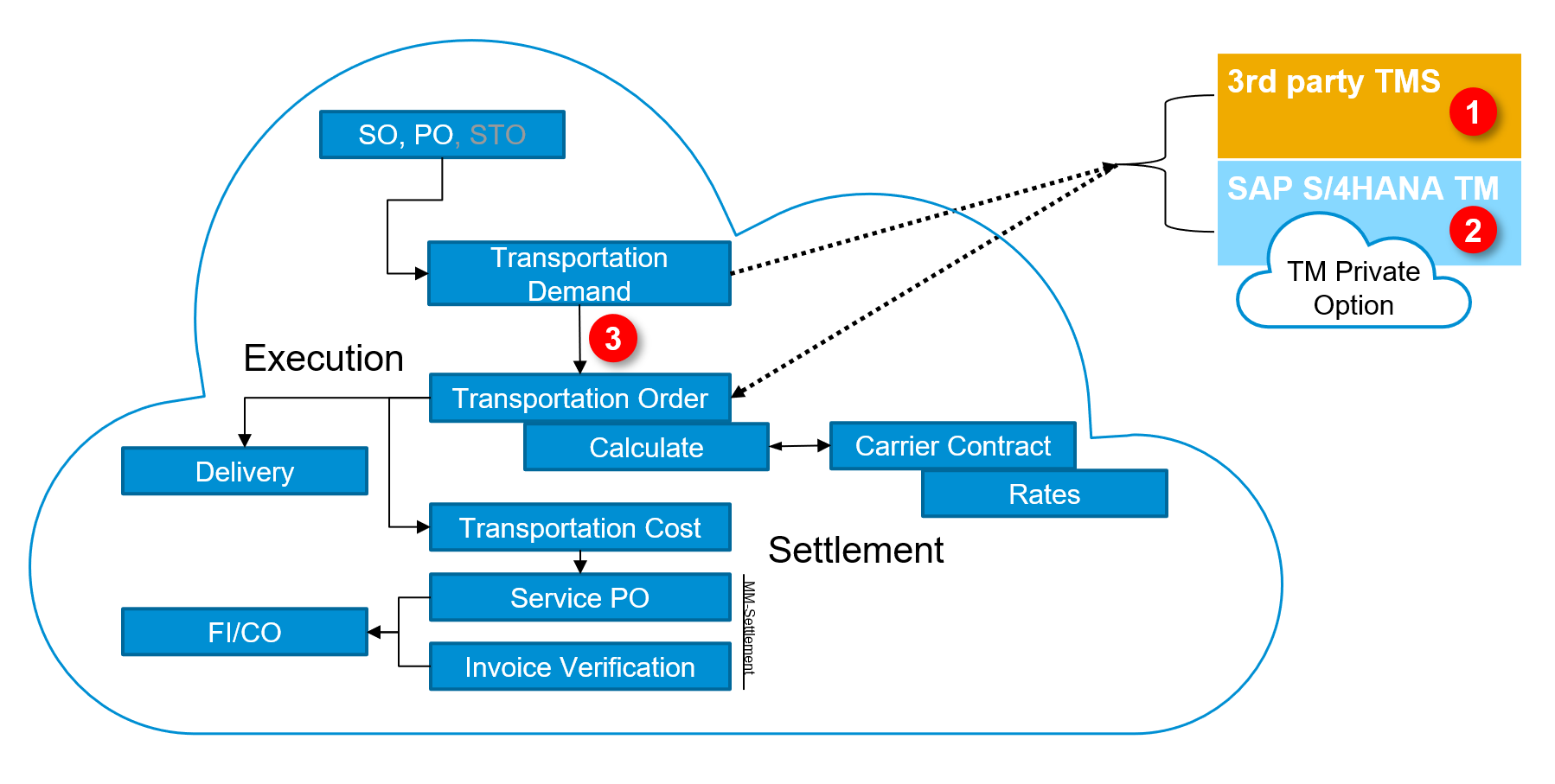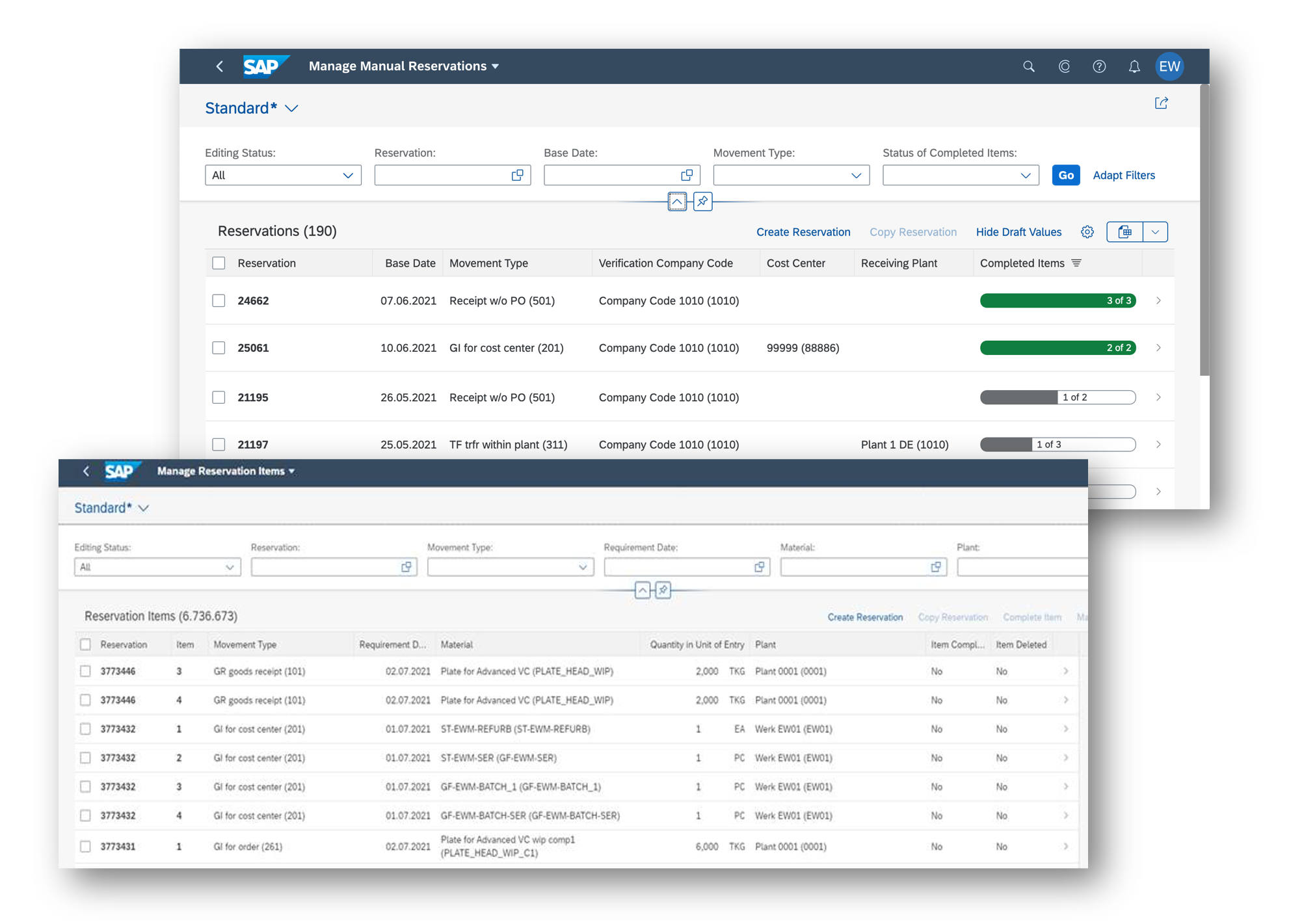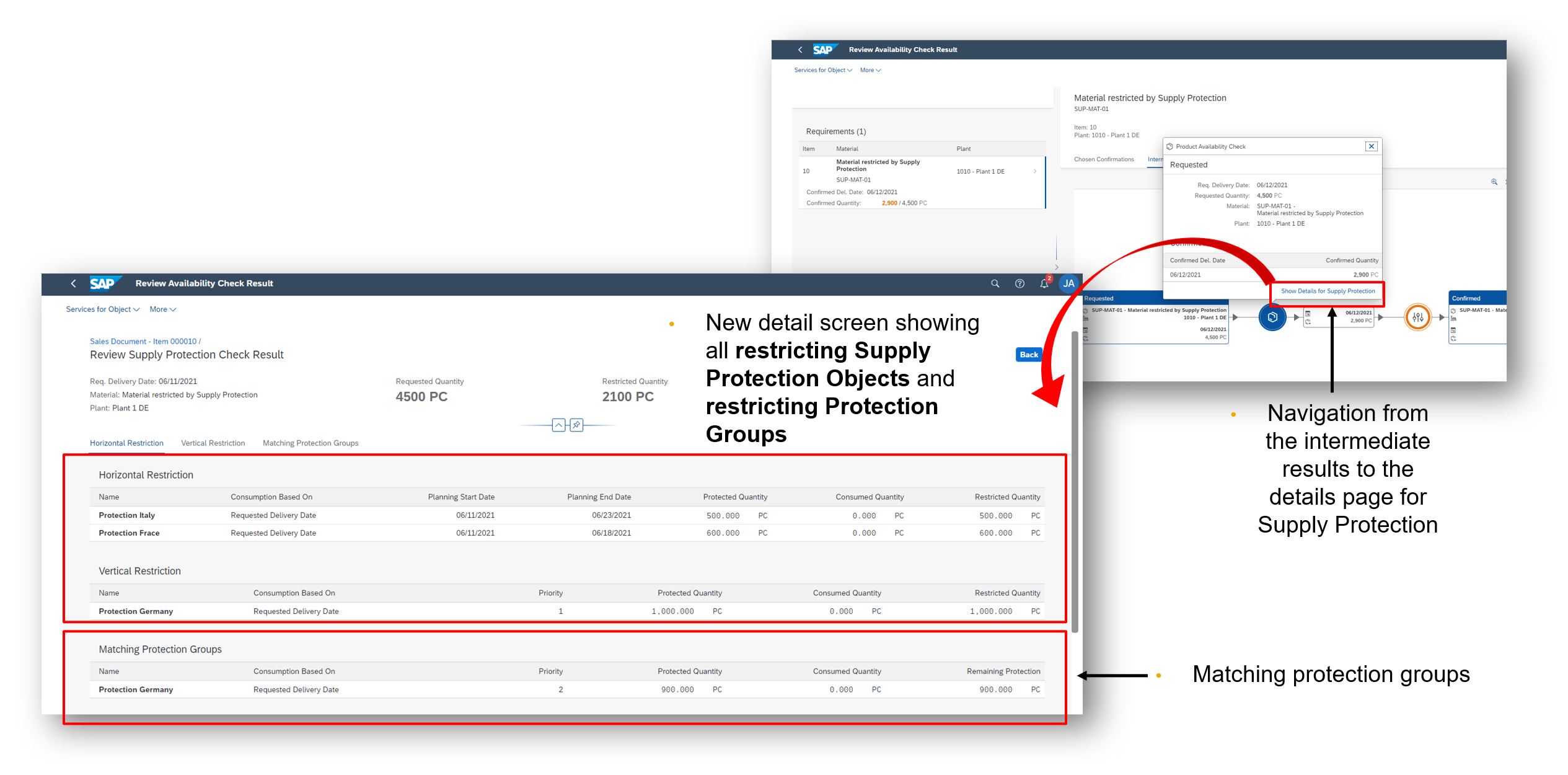
- SAP Community
- Products and Technology
- Enterprise Resource Planning
- ERP Blogs by SAP
- Supply Chain in SAP S/4HANA Cloud 2108
- Subscribe to RSS Feed
- Mark as New
- Mark as Read
- Bookmark
- Subscribe
- Printer Friendly Page
- Report Inappropriate Content
For the first time in the history of the SAP S/4HANA Cloud Manufacturing & Supply Chain blog series, manufacturing innovations are described in a separate blog Manufacturing in SAP S/4HANA Cloud 2108 to shorten the reading time per blog and thus increase their clarity.
First, this blog post starts with the table of contents for ease of reference and allows you to navigate directly to the topic you are interested in by clicking on a specific entry:
Transportation Management
New end-to-end scenario 'Manual Transportation Planning'
Dangerous Goods Checks in Freight Unit and Freight Order Processes
Warehouse Management
Run Warehouse Processes on Mobile RF Devices
Multiple Storage Locations in a Single Warehouse
Physical Inventory Count - Assign Serial Number Range
Display Warehouse Documents
Inventory Management
Manage Physical Inventory Count
Manage Reservations
Post Subsequent Adjustment for subcontracting components
Advanced Available-to-Promise
Deprecation of HANA Rules Framework Based Filter Conditions
Review Availability Check Result - Enhanced insight information
Flexible Time Buckets in Supply Protection
Logistics Execution
Overview of Innovations
Manage Output Items for Deliveries
Check out my video highlighting the following supply chain release highlights:
- New SAP Fiori app 'Manage Physical Inventory Count'
- Brand-new end-to-end solution 'Manual Transportation Planning'
- Mobile Warehousing through the radio frequency (RF) framework
Video 1: Highlights for Supply Chain in the 2108 release
Transportation Management
New end-to-end scenario 'Manual Transportation Planning'
In Transportation Management we launch a brand-new end-to-end solution which enables SAP S/4HANA Cloud Transportation Management to be used as a standalone planning system. The main features of basic transportation are:
- One single holistic platform with end to end supply chain planning and execution
- Combination of inbound and outbound freight
- Comprehensive integration into Order to Cash and Procure to Pay processes
- Manual Freight Planning
- Efficient Freight Execution and Monitoring
- Accurate, integrated freight costing, settlement with Carrier invoice verification & payment
The next figure illustrates the main features of basic transportation in SAP S/4HANA Cloud at a glance:

Fig. 1: Main features of basic transportation in SAP S/4HANA Cloud TM
So far, the so-called Order-Based Transportation Consolidation best practice scenario (scope item 3EP) supports transportation execution and monitoring in SAP S/4HANA Cloud in connection with a decentralized transportation management system (scope item 4OZ).
Now, the new best practice scenarios for Manual Transportation Planning in inbound (scope item 5OS) and outbound (scope item 4MO) processing enable Manual Freight Planning in SAP S/4HANA Cloud and removes the need of an external Transportation Management system to create freight orders.
The next figure shows the three options:


Fig. 2: SAP S/4HANA Cloud TM - Process Overview
How does the Manual Transportation Planning in SAP S/4HANA Cloud work (see new option 3 in figure 2)?
The purchase-order-based transportation demands (freight units) are built considering transportation constraints. Created freight units are planned using the transportation cockpit. Charges for transporting the cargo are calculated based on rates maintained in a released freight agreement. Based on the communication with the assigned carrier responsible for the execution of the transportation, relevant subcontracting status is reported. Inbound Delivery creation is triggered from the freight order based on the consolidation information. Freight costs in the freight order are broken down. The aggregated freight costs of the order are shared to the delivery item level based on its gross weight. The arrival and check-in of the truck is reported. After completing the physical unloading process, the check-out and the departure of the truck is reported to enable the posting of accruals. After the confirmation of a freight order for posting, the system automatically posts the freight costs to Financial Accounting for accruals. During the posting process, freight orders can be monitored for any errors to resolve them. The invoice received from the carrier is finally verified against the costs calculated in the freight order.
My colleague Markus Oertelt has presented the Manual Transportation Planning best practice scenario as a system demo in our 2108 Manufacturing and Supply Chain session of the SAP S/4HANA Cloud 2108 Early Release Series. Search for the Recording - Topic 10: Manufacturing & Supply Chain & Discrete Industries - Session from July 21st, 2...
His demo consists of 7 process steps.
For ease of consumption, they are available here as separate demo videos:
Video 2: Manual Transportation Planning - Demo Part 1 - Sales Order Tracking
Video 3: Manual Transportation Planning - Demo Part 2 - Manual Freight Planning
Video 4: Manual Transportation Planning - Demo Part 3 - Execute Picking
Video 5: Manual Transportation Planning - Demo Part 4 - TM Manual Execution
Video 6: Manual Transportation Planning - Demo Part 5 - Monitor & Perform Accrual Postings
Video 7: Manual Transportation Planning - Demo Part 6 - TM Integration Procurement
Video 8: Manual Transportation Planning - Demo Part 7 - TM Integration Finance (Billing)
Watch also the next video in which Pascal Renet explains the Manual Transportation Planning in SAP S/4HANA Cloud:
Video 9: Transportation Management in SAP S/4HANA Cloud explained by Pascal Renet
(back to top)
Dangerous Goods Checks in Freight Unit and Freight Order Processes
Logistics Integration with Product Compliance
To support your compliance with dangerous goods regulations, dangerous goods checks are now integrated into the processing of the following documents for transportation by road:
- Freight Unit
- Freight Order

Fig. 3: SAP Fiori app 'Manage Freight Orders'
(back to top)
Warehouse Management
Run Warehouse Processes on Mobile RF Devices
SAP® Warehouse Management in SAP S/4HANA Cloud (Cloud WM) supports now Mobile Warehousing through the radio frequency (RF) framework.
This feature enables you to use radio frequency (RF) devices to carry out warehouse activities such as putaway, picking, packing, and replenishment. The system guides warehouse operators through their daily tasks. They can scan bar codes to record and verify data such as storage bins, products, and handling unit numbers, or to enter picked quantities. With Warehouse Management, you have an out-of-the box set of SAP GUI for HTML mobile RF screens for processing activities in a warehouse.
The next figure shows the mobile RF screens for System-Guided processing:

Fig. 4: Example of System-Guided processing
In the next video, Markus explains the Mobile Operations, the example of Processing a Picking Warehouse Task, and shows a short demo with a Zebra device.
Video 10: Mobile Warehousing - Using RF Framework
(back to top)
Multiple Storage Locations in a Single Warehouse
With the 2108 release, you can handle stock from multiple storage locations in a single warehouse. You can perform posting changes for stock from different storage locations in a single warehouse. Note that for stock from a different warehouse, you always must perform an inbound and outbound process to move the goods from one storage location to another because they belong to a different warehouse. This is not the case if the stock is managed in the same warehouse.

Fig. 5: Ability to manage multiple storage locations within one cloud warehouse number
(back to top)
Physical Inventory Counting - Assign Serial Number Range
Since the last release, you can manage serial numbers at a bin level with cloud warehouse management functionality (see my 2105 blog).
With the 2108 release, you can assign ranges of serial numbers to physical inventory items.
In the next video, Markus shows how a warehouse operative (EWM) assigns a serial number range by using the Count Physical Inventory app and how the system validates the input.
Video 11: 'Count Physical Inventory' app - Assign Serial Number Range
(back to top)
Display Warehouse Documents
A warehouse clerk can now use the new SAP Fiori app Display Warehouse Documents to select and display warehouse documents. A warehouse document contains all information about a goods movement, for example, goods receipt or goods issue posting.
In the next video, Markus shows you the new app in the system:
Video 12: New SAP Fiori app 'Display Warehouse Documents'
(back to top)
Check out also the blog post from Joerg Michaelis about SAP® Warehouse Management in SAP S/4HANA Cloud 2108 Development Overview in which further new features like attachments for Handling Units are described.
Inventory Management
Manage Physical Inventory Count
Using the Manage Physical Inventory Count app, you can monitor the processing status of physical inventory documents and can navigate directly to the required physical inventory document for counting document items. All items are grouped in the sections Uncounted or Counted. If open items are available, you can direct start to edit them, that means to continue the count. An important feature is the integration of mobile scanner to optimize barcode scanning of physical inventory counts with internal and external scanner devices.
Watch the next video in which I show you how easy it is to use the new SAP Fiori app on a smartphone and scan a material barcode with the device camera:
Video 13: New SAP Fiori App 'Manage Physical Inventory Count'
(back to top)
Manage Reservations
The new SAP Fiori app Manage Manual Reservations enables a warehouse clerk to manually create and manage reservations for goods movements for a warehouse. Based on initial user’s input, the app calculates a predefined set of rules for reservation processing and adds relevant default values. You can search for reservations using different filters and display general information and details of individual reservation items. It’s possible to plan goods issues, goods receipts, and transfer postings. In addition, the new SAP Fiori app Manage Reservation Items enables you to view, mark as deleted, or copy the items of a reservation as well as create a new manual reservation. Both apps are closing an important functional gap which was requested by customer.

Fig. 6: New SAP Fiori apps 'Manage Manual Reservations' and 'Manage Reservation Items'
(back to top)
Post Subsequent Adjustment for subcontracting components
The new Post Subsequent Adjustment app enables an inventory manager and warehouse clerk to maintain subsequent correction of a consumption posting for Subcontracting components. In case, a subcontractor has consumed excess or fewer components as originally planned and posted, you can adjust the consumption accordingly. This app also focuses on the special process step of the subsequent posting during the goods movement and enables optimized access and options for the user by automatically preselecting the relevant purchase orders with subcontracting.

Fig. 7: New SAP Fiori 'Post Subsequent Adjustment'
(back to top)
Advanced Available-to-Promise (aATP)
Backorder Processing (BOP)
Deprecation of HANA Rules Framework Based Filter Conditions
Introducing the Select Option Tool (SOT) in SAP S/4HANA Cloud 1908 and SAP S/4HANA 1909 was the first step towards deprecating the SAP HANA Rules-Based Framework (HRF) as the basis for requirements filtering in Advanced Available-to-Promise (aATP): since then, HRF-based filter conditions could be displayed for comparison purposes but could no longer edited. See my 1908 Blog.
New BOP segments were created using SOT and existing BOP segments could only be edited after automatic migration of the HRF-based conditions to SOT. Depending on the complexity of the condition, a manual migration was sometimes necessary, as communicated in SAP Note 2800374 (which also includes examples for migrating to a SOT-based requirement filter.)
For more information, see SAP Note 3021040 and read the blog post Deprecation of HRF-Based Filter Conditions in aATP.
(back to top)
Review Availability Check Result (RACR)
Product Allocation details: New bar chart and new screen showing
other orders
After executing an availability check against product allocation, in the Review Product Allocation Check Result screen, you can see the different quantities of a time period in the Consumptions detail screen displayed in a stacked bar chart for each period. Different colors indicate the different types of quantities. For the quantity of a time period that is consumed by other orders you can now display these orders in a new screen listing all other orders consuming quantity from this period.

Fig. 8: 'Review Availability Check Result' screen - New bar chart displaying all quantities of a period
Navigation and improved alignment of nodes
With the past release, the Review Availability Check Result has been enhanced to provide further insights to the confirmation determination for a single item. For this purpose the Intermediate Results tab enables the user to identify which basic method cut the request and what the confirmation was. Furthermore, it makes transparent which material-plant combinations have been checked to determine the best confirmation. (see my 2105 blog).
Now, the Review Availability Check Result has further improved when it comes to Intermediate Results display. The pop over provides an overview for basic method and offers navigation to a comprehensive explanation for product allocation and supply protection.

Fig. 9: 'Review Availability Check Result' screen - Comprehensive explanation for product allocation
Supply Protection in "Review Availability Check Result" screen
The Review Availability Check Result screen enables you to display details about the impact of supply protection on the product availability check (PAC). This information is integrated in the basic check method of the product availability check and can explain, for example, why a requested quantity cannot be confirmed completely.

Fig. 10: Supply Protection in "Review Availability Check Result" screen
(back to top)
Supply Protection
Flexible Time Buckets
Supply Protection enables an Order Fulfillment Manager to define protected quantities for defined groups based on specific characteristics.
With the period type "Flexible", it is possible to define time buckets with a flexible length. In general it might make sense to have shorter time buckets in the high season or in weeks with a special campaign. Beyond these special weeks or days, it might make sense to have longer lasting time buckets. The usage of flexible time buckets can help to reduce the overall number of time buckets, and it allows a more specific protection.

Fig. 11: 'Manage Supply Protection' app - Flexible time buckets
(back to top)
Logistics Execution
Overview of Innovations
Finally, the next figure provides an overview of innovations in the area of Logistics Execution (LE).

Fig. 12: Overview of innovations in the area of Logistics Execution (LE)
(back to top)
For instance I will show you in this blog the new SAP Fiori App
Manage Output Items for Deliveries
With the new Manage Output Items for Deliveries app, you can display a list of output items for delivery headers and items. According to your filter criteria, it lets you view and process one or more outputs. You can also display output logs and navigate to document previews for selected output items

Fig. 13: New SAP Fiori app 'Manage Output Items for Deliveries'
(back to top)
Thanks for reading this blog post. Stay tuned!
You will find a collection of my SAP S/4HANA Cloud release blogs here:
Recently, my colleague Markus Oertelt has started an interesting blog series about
Discrete Industries in SAP S/4HANA Cloud.
Would you like to learn more about how innovative organizations utilize Industry 4.0 to improve manufacturing processes? Register now for the Industry 4.0 Intelligent Products Report.
For more information on SAP S/4HANA Cloud, check out the following links:
- SAP S/4HANA Cloud release info here
- jan.gilg SAP News Center article here
- Sven Denecken’s SAP S/4HANA Cloud 2108 Release Blog
- Latest SAP S/4HANA Cloud Release Blogs here and previous release highlights here
- Product videos on our SAP S/4HANA Cloud and SAP S/4HANA YouTube playlist
- SAP S/4HANA PSCC Digital Enablement Wheel here
- Early Release Webinar Series here
- Inside SAP S/4HANA Podcast here
- openSAP Microlearning for SAP S/4HANA here
- Best practices for SAP S/4HANA Cloud here
- SAP S/4HANA Cloud Community: here
- Feature Scope Description here
- What’s New here
- Help Portal Product Page here
- Implementation Portal here
Follow us via @SAP and #S4HANA, or myself via @GerhardWelker and LinkedIn
You must be a registered user to add a comment. If you've already registered, sign in. Otherwise, register and sign in.
-
Artificial Intelligence (AI)
1 -
Business Trends
363 -
Business Trends
29 -
Customer COE Basics and Fundamentals
1 -
Digital Transformation with Cloud ERP (DT)
1 -
Event Information
461 -
Event Information
28 -
Expert Insights
114 -
Expert Insights
187 -
General
1 -
Governance and Organization
1 -
Introduction
1 -
Life at SAP
414 -
Life at SAP
2 -
Product Updates
4,679 -
Product Updates
270 -
Roadmap and Strategy
1 -
Technology Updates
1,499 -
Technology Updates
99
- SAP Integration with SuccessFactors Through CPI: A Step-by-Step Handbook for Seamless Connectivity in Enterprise Resource Planning Blogs by Members
- Why YCOA? The value of the standard Chart of Accounts in S/4HANA Cloud Public Edition. in Enterprise Resource Planning Blogs by SAP
- User wise projects displaying and hiding in S4hana public cloud in Enterprise Resource Planning Q&A
- Quantity Distribution in Enterprise Resource Planning Blogs by SAP
- New Tax Calculation Procedure Creation in S4HANA Public Cloud in Enterprise Resource Planning Q&A
| User | Count |
|---|---|
| 7 | |
| 6 | |
| 5 | |
| 4 | |
| 4 | |
| 4 | |
| 4 | |
| 4 | |
| 3 | |
| 3 |